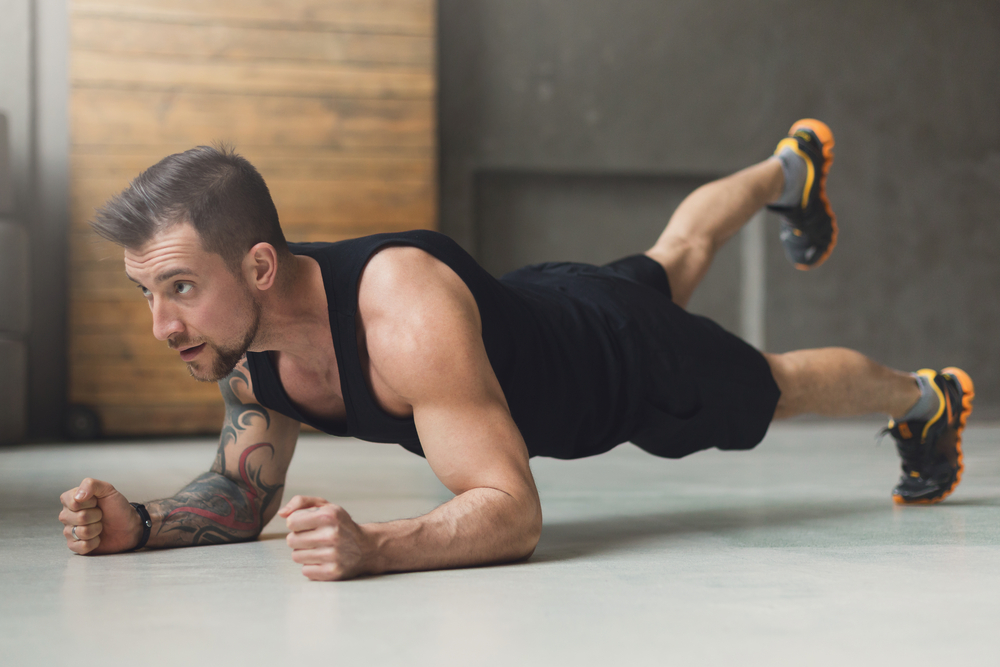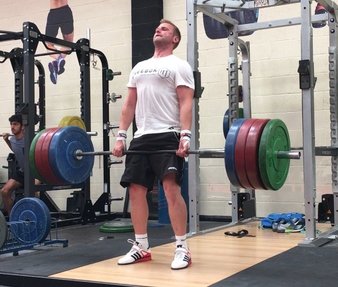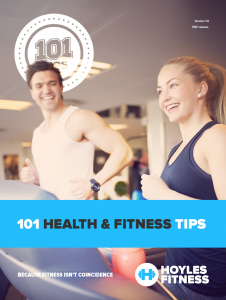Six Science-Backed Methods To Improving Your Core Training Results…
Core training is a funny old world. There’s a million articles on how to train your core, but it’s also the area of training that I see most people, including personal trainers get wrong. In the search for the perfect core training routine a lot of people forget about its actual function.
Lost in a sea of buzz-words and elaborate exercises, trainers tend to fall foul of a need to impress, a need to discover something new and a way to revolutionise.
We don’t need to.
The beauty of being a personal trainer in these modern times is that we have access to research produced by sports science labs. At the click of a few buttons, we have lab-data of EMG muscle stimulation during a variety of exercises. The lessons it took our coaching forefathers years of trial and error to learn, we can pick up within minutes.
Understanding the Function of the Core and Abdominals
The core isn’t merely to keep you upright. The core has to stabilise the spine during movement. It has to resist rotation and prevent instability during impact. It plays a role in helping to generate force in different planes of movement – flexion, extension and rotation. It helps to maintain posture and prevent the torso collapsing under load.
If you think you can train all of these things with a few crunches and holding a plank for ages, then you’re a tad mistaken.
The core is a key element of balance, control of movement. Without a strong and fully-functioning core, you increase your risk of injury and reduce your athleticism. You’ll limit the weight you can lift, the rotational force you can generate, how fast you can sprint, how high you can jump and how long you can run for.
You simply can’t be athletic with a weak core.
The Goal of Core Training
The goal in core training should be to improve its ability to stabilise the spine during a variety of movements and impacts.
We force adaption of the core through movement in different directions, with varying loads. Effective core training mixes elements of stability and instability, which is important make sure that core strength is reactive and not simply applicable to stable surfaces and ‘perfect’, neutral spine positions.
Your goal shouldn’t be to dream up a mixture of new movements that pay little to no attention to the functions that you’re trying to improve.

Where Core Training Goes Wrong
The problem with a lot of magazine core workouts is that they’re just not thought through. There’s no consideration of an end goal and ultimately, they’re written by journalists, not personal trainers or strength coaches who actually train people for a living. They just think up a few different core training exercises, ideally with a little ‘variation’ and put them on a page.
That’s not how I do things. Instead, here’s my approach…
I start with an over-arching principle – in this case train core stability. I then dial back and work out what I need to do in order to achieve the goal. There’s no ‘one-size-fits-all’ approach to effectively training the core and the person who is being trained may have a different set of requirements to others. In the case of a golfer I trained for example, he needed to have excellent rotational strength, so that was the majority of his work.
In other cases there may be a requirement to adjust movements and exercises around a lower back injury, a hip injury etc. When you are dealing with something like this, you have to be willing to be flexible to the needs of the individual.
The Six Considerations for Core Training Programmes
Before you go designing the best core training programme in the world, you should consider the following…
- Consider Exercise Progressions
You should always start with the most basic exercises within your programme, increasing load, intensity and volume as you go. In a training programme you should always allow for progression and regression of the exercises.
2. Think Deep (muscles)
Your core training programme will only be effective if it trains the deeper internal muscles and not just the superficial, ‘six pack’. These are the true muscles that are involved with spinal stability and effective movement control.
3. Harness Instability
For a core workout to be effective, it absolutely has to include an element of instability. Research shows that adding an element of instability to your workouts increases the muscle activation during exercise. You can add instability with a Swiss Ball or TRX for example.
4. Include Various Planes of Movement
We’re often guilty of thinking in over-simplistic terms with ab exercises, where we only train in one plane of movement. A lot of abdominal exercise is done linearly – think planks, crunches etc. In order to maximise core training results we have to include rotations etc.
5. Reduce Hip Flexor Involvement
When we train the abdominals we’re also recruiting the hip flexors – in exercises such as crunches and sit ups we actually recruit them more than you think, reducing the work done by the target muscles. A good core training programme seeks to reduce the amount of hip flexor involvement, placing more emphasis on the target muscles.
6. Include Back Exercises
Too often when we think of core exercises, we think of exercises that train the abdominals. The core includes the deep muscles, the intercostals and obliques on the side of the body and the spinal erectors. When studied it became clear that exercises that started in a vertical position such as deadlifts, squats and the olympic lifts recruited more core muscles than those in a horizontal position such as crunches.

Exercise Selection for the Best Core Muscle Recruitment
Building on what we know about which exercises stimulate the muscles of the core most effectively, we have to build a core training programme that benefits us across all of the movement patterns, whilst providing a progress and effective series of challenges for the abdominals.
In practice, that means following the guidance above and focussing on exercises that provide us with multiple benefits. Breaking the core exercises down into a series of simple movements is more helpful.
These exercises below combine the best quality of abdominal muscle recruitment with a sufficiently varied and challenging movements. These core exercises have an excellent transfer to sport as well, giving your core training programme a mix of sporting effectiveness and functional stability.
Core Exercises with Instability Elements
These exercises are performed without a stable base, which research proves recruits more of the core muscles. It also allows the body to cope with the unpredictable demands of surfaces during sport, such as grass pitches that won’t always be perfectly flat.
TRX Pike
The TRX Pike is an excellent ab exercise because it requires control of the lower limbs, governed by the core. It also trains shoulder stability so helps with all-round static strength.
Stir the Pots
Stir the Pots are an important addition to a core training programme because they combine many fundamental elements to core training – instability, control, progression and a removal of hip flexor engagement.
Self-Held Static Core Exercises
The core exercises with a self-held static element add an additional challenge – you have to move slowly enough and with enough control to ensure that your form doesn’t break down. You can’t use momentum here to cheat with these exercises if you want to do them correctly. These have additional benefits in that they also train grip strength.
Hanging Leg Raises
I like to include hanging leg raises in my core training because they’re so versatile – they’re ‘bottom up’ rather than ‘top down’ in movement, plus they force movement control. Finally, they help improve grip strength.
Toes to bar
The toes to bar are a progression of the hanging leg raises, so they give a target to aim for when it comes to core training exercises.
Rotation/Anti-Rotation Core Exercises
The rotation and anti-rotation exercises train the muscles of the core that help to create resist rotation, which is a key element of a lot of sports such as golf, tennis and throwing sports. They also help to train the core through different movements which is good for spinal health.
Pallof Press
The Pallof Press is a simple but very effective movement in core training. It can be done by anyone from beginner to advanced, plus the kneeling element helps to stabilise the spine, making them perfect for beginners or people coming back from injury.
Russian Twists
This is the classic rotational core exercise. It’s easy to get wrong, so I’d suggest you start light and focus on quality of movement rather than quantity of reps.
Anti-Extension Core Exercises
The anti-extension exercises challenge the core more than most of the other exercises, because they increase the magnitude of the moments of the force. In English, it means by increasing the distance between the anchor points with the floor throughout the exercise, it gets progressively harder.
Ab Wheel Roll Outs
Ab wheel roll outs are in the same ‘family’ as the stir the pots in that they resist an extension of the trunk via abdominal muscle contraction. These are very tough but very effective exercises. They’re also done linearly, helping to stabilise the spine.
Swiss Ball Roll Outs
Swiss ball roll outs are the same movement as the ab wheel, but they include the added element of instability from the Swiss ball. Keep the movement slow and controlled in order to benefit most from them.
Back Exercises to Include in Core Training Programmes
We often forget that the core isn’t just the abs – it includes the muscles of the back as well. By performing these exercises, you’ll use the erectors that help to stabilise the spine. If you remember I told you that research showed that exercises starting in a vertical plane (upright) helped to recruit more of the core muscles during the exercise.
American Kettlebell Swings
The American Kettlebell Swings gets a lot of grief amongst the purists, but screw them – it’s an exercise I like. Performed with a exaggerated overhead extension it really helps to stretch and recruit the abdominal muscles so I think it deserves a place in a core training programme.
Deadlifts
Often seen as the ‘king’ of exercises, the deadlift features here because it ticks a lot of boxes – it’s a back exercise, it starts vertically, it recruits deep core muscles, it maintains spinal stability and it offers tonnes of progression.
Non-Core ‘Core’ Exercises
These are exercises that aren’t typically grouped in with core training movements but offer excellent abdominal and core recruitment. With these exercises in your programme you’ll benefit both the target muscles and experience core training benefits as a result.
Front Squats
The front squat is a staple of weightlifting programming. It’s a hard movement to cheat on, but it also offers the core a chance to train. Fundamental to the movement is an upright torso, which forces the core and upper back to work hard. The front-loading of the weight makes the core work hard.
Goblet Squats
Much in the same way that the front squat forces the core to work because of the front-loading of the weight, the Goblet squat is another exercise that increases core engagement. For extra benefit, perform the Goblet squat in a slow, controlled manner.
Core Training Principles: Summarised
If you want to train your core to be strong, functional and injury-resistant, a good starting point is to ignore a lot of the advice you’ve probably read. If a core training programme isn’t multi-directional, include instability or back exercises, it’s simply not very good. Take the advice here and put it into a core training programme, adapting the sets and reps to suit your needs.
These core training principles are backed by science. They’re not recommended because they look cool, or because they’re fun to do – they’re in the article because they’re scientifically-proven to be effective principles.
If you want to upgrade your core training, these should form the blueprint of your programming. Regardless of your goal, you’ll help yourself by including these exercises.
